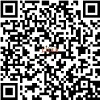(2) * Bambang Widi Pratolo
*corresponding author
AbstractThe pedagogical approach of using educational games has been highly effective in instructing non-native English speakers with English as a second or foreign language. The researchers systematically analyze the effectiveness of game-based learning (GBL) in English language teaching (ELT) by identifying and analyzing the game genres used in English language learning and the learning outcomes achieved through GBL. Using a keyword search methodology in the ScienceDirect database, 17 relevant studies were analyzed. The findings indicate that various game genres, including interactive, role-play, memory, simulation, and strategy games, significantly enhance vocabulary, grammar understanding, and overall engagement in ELT. The study concludes that GBL is a highly effective approach in improving English language proficiency among non-native speakers.
Keywordseffectiveness; English language teaching; game-based learning
|
DOIhttps://doi.org/10.31763/ijele.v6i2.1312 |
Article metrics10.31763/ijele.v6i2.1312 Abstract views : 1155 | PDF views : 257 |
Cite |
Full Text Download Download
|
References
[1] S. Xue and Z. Han, “Developing a Framework for Conceptualizing Affordances of Technology in Education,†Front. Educ. Technol., vol. 6, no. 1, p. p1, 2023, doi: 10.22158/fet.v6n1p1.
[2] S. Windiarti, N. Fadilah, E. Dhermawati, and B. W. Pratolo, “Teachers’ Perception toward the Obstacles of E-Learning Classes,†Ethical Ling. J. Lang. Teach. Lit., vol. 6, no. 2, pp. 117–128, 2019, doi: 10.30605/25409190.v6.117-128.
[3] A. KuloĞLu and V. Karabekmez, “The Relationship Between 21st-century Teacher Skills and Critical Thinking Skills of Classroom Teacher,†Int. J. Psychol. Educ. Stud., vol. 9, no. 1, pp. 91–101, Mar. 2022, doi: 10.52380/ijpes.2022.9.1.551.
[4] M. Hartt, H. Hosseini, and M. Mostafapour, “Game On: Exploring the Effectiveness of Game-based Learning,†Plan. Pract. Res., vol. 35, no. 5, pp. 589–604, 2020, doi: 10.1080/02697459.2020.1778859.
[5] T. Hanghøj, S. Hajslund, and S. Ejsing-Duun, “The Challenges of Designing Learning Games: Interviewing Professional Learning game Designers,†Proc. Eur. Conf. Games-based Learn., vol. 2022-Octob, pp. 263–270, 2022, doi: 10.34190/ecgbl.16.1.669.
[6] S. Adipat, K. Laksana, K. Busayanon, A. Ausawasowan, and B. Adipat, “Engaging Students in the Learning Process with Game-Based Learning: The Fundamental Concepts,†Int. J. Technol. Educ., vol. 4, no. 3, pp. 542–552, 2021, doi: 10.46328/ijte.169.
[7] L. Pan et al., “How to Implement Game-Based Learning in a Smart Classroom? A Model Based on a Systematic Literature Review and Delphi Method,†Front. Psychol., vol. 12, no. December, pp. 1–13, 2021, doi: 10.3389/fpsyg.2021.749837.
[8] K. Dimitra, K. Konstantinos, Z. Christina, and T. Katerina, “Types of Game-Based Learning in Education: A brief state of the art and the implementation in Greece,†Eur. Educ. Res., vol. 3, no. 2, pp. 87–100, 2020, doi: 10.31757/euer.324.
[9] A. Arsyad, “Media Pembelajaran,†Jakarta: PT. Raja Grafindo Persada, 2002.
[10] A. Ochoa, “Simulation and Gaming: Simile or Synonym?,†Peabody J. Educ., vol. 47(2), pp. 104–107, 1969. doi: 10.1080/01619566909537690
[11] A. A. Deshpande and S. H. Huang, “Simulation Games in Engineering Education: A State-of-the-Art Review,†Comput. Appl. Eng. Educ., vol. 19, no. 3, pp. 399–410, 2011, doi: 10.1002/cae.20323.
[12] A. P. Widhiasih and S. Yunita, “Pengembangan Permainan Interaktif Berbasis Teknologi Untuk Anak Usia Dini,†Ceria J. Progr. Stud. Pendidik. Anak Usia Dini, vol. 10, no. 1, p. 1, 2021, doi: 10.31000/ceria.v10i1.4831.
[13] S. P. Raikar, “Quiz,†Britannica, Dec-2023.
[14] S. Zuhriyah and B. W. Pratolo, “Exploring students’ views in the use of quizizz as an assessment tool in english as a foreign language (efl) class,†Univers. J. Educ. Res., vol. 8, no. 11, pp. 5312–5317, 2020, doi: 10.13189/ujer.2020.081132.
[15] Z. Zhou and L. Wu, “The Study of Principles of Puzzle Game Design,†Proc. 2012 Int. Symp. Inf. Technol. Med. Educ. ITME 2012, vol. 2, pp. 1079–1083, 2012, doi: 10.1109/ITiME.2012.6291487.
[16] F. Fotouhi-Ghazvini, R. Earnshaw, A. Moeini, D. Robison, and P. Excell, “From E-Learning to M-Learning - the use of Mixed Reality Games as a new Educational Paradigm,†Int. J. Interact. Mob. Technol., vol. 5, no. 2, p. 17, 2011, doi: 10.3991/ijim.v5i2.1463.
[17] J. Farkaš, “Teaching English Using Table-top Role-playing Games,†J.J. Strossmayer University of Osijek, 2018.
[18] J. Colbert, An Intercultural Approach to English Language Teaching, Languages . Multilingual Matters Ltd., 2003.
[19] H. Jarvis, “Technology and Change in English Language Teaching (ELT),†Asian EFL J., vol. 7, no. 4, pp. 213–227, 2005.
[20] S. Saengboon, “Second Language Acquisition (SLA) and English Language Teaching (ELT),†Passa, vol. 35. pp. 11–34, 2004. doi: 10.58837/CHULA.PASAA.35.1.1
[21] F. Gao, L. Li, and Y. Sun, “A Systematic Review of Mobile Game-Based Learning in STEM Education,†Educ. Technol. Res. Dev., vol. 68, no. 4, pp. 1791–1827, 2020, doi: 10.1007/s11423-020-09787-0.
[22] N. Pellas and S. Mystakidis, “A systematic review of research about game-based learning in virtual worlds,†J. Univers. Comput. Sci., vol. 26, no. 8, pp. 1017–1042, 2020, doi: 10.3897/jucs.2020.054.
[23] M. H. Hussein, “Effects of Digital Game-Based Learning on Elementary Science Learning: A Systematic Review,†IEEE Access, vol. 7, pp. 62465–62478, 2019, doi: 10.1109/ACCESS.2019.2916324.
[24] U. Sanusi, “ScienceDirect Empowering Researchers at Every Step,†2016.
[25] M. Qian and K. . Clark, “Game-based Learning and 21st Century Skills: A Review of Recent Research,†Comput. Hum. Behav., vol. 63 (1), pp. 50–58, 2016. doi: 10.1016/j.chb.2016.05.023
[26] G. A. Fine, Shared Fantasy: Role-Playing Games as Social Worlds, 2002nd ed. The University of Chicago, 1983.
[27] A. Arikan, “An Examination of Online Grammar Teaching Materials Available for Young Learners,†Procedia - Soc. Behav. Sci., vol. 158, pp. 18–22, 2014, doi: 10.1016/j.sbspro.2014.12.026.
[28] E.-M. Emandi, “English Workshops for Primary School Children in Romania – A Privileged Didactic Activity,†Procedia - Soc. Behav. Sci., vol. 203, pp. 147–152, 2015, doi: 10.1016/j.sbspro.2015.08.273.
[29] B. G. İlter, “How does Technology Affect Language Learning Process at an Early Age?,†Procedia - Soc. Behav. Sci., vol. 199, pp. 311–316, 2015, doi: 10.1016/j.sbspro.2015.07.552.
[30] H. Kaatari, T. Larsson, Y. Wang, S. Acikara-Eickhoff, and P. Sundqvist, “Exploring the Effects of Target-Language Extramural Activities on Students’ Written Production,†J. Second Lang. Writ., vol. 62, no. June, p. 101062, 2023, doi: 10.1016/j.jslw.2023.101062.
[31] Ş. Ç. Korkmaz, “Language Games as a Part of Edutainment,†Procedia - Soc. Behav. Sci., vol. 93, pp. 1249–1253, 2013, doi: 10.1016/j.sbspro.2013.10.023.
[32] R.-A. Pilar, A. Jorge, and C. Cristina, “The Use of Current Mobile Learning Applications in EFL,†Procedia - Soc. Behav. Sci., vol. 103, pp. 1189–1196, 2013, doi: 10.1016/j.sbspro.2013.10.446.
[33] N. Shahriarpour and Z. Kafi, “On the Effect of Playing Digital Games on Iranian Intermediate EFL Learners’ Motivation toward Learning English Vocabularies,†Procedia - Soc. Behav. Sci., vol. 98, pp. 1738–1743, 2014, doi: 10.1016/j.sbspro.2014.03.601.
[34] M. I. M. M. E. Toffle, “Cross-cultural Website Analysis as a Method for Teaching Intercultural Competence in the University English Program,†Procedia - Soc. Behav. Sci., vol. 116, no. 2006, pp. 3524–3535, 2014, doi: 10.1016/j.sbspro.2014.01.797.
[35] B. Güryay, “Creative Drama : A Way to Understand Shakespeare?,†Procedia - Soc. Behav. Sci., vol. 116, pp. 1127–1131, 2014, doi: 10.1016/j.sbspro.2014.01.356.
[36] I. G. Kondrateva and A. A. Valeev, “Technology of Students’ Professional Competences Formation While Teaching a Foreign Language,†Procedia - Soc. Behav. Sci., vol. 191, pp. 2250–2253, 2015, doi: 10.1016/j.sbspro.2015.04.313.
[37] S. Pozdeeva and A. Obskov, “Justification of the Main Pedagogical Conditions of Interactive Teaching a Foreign Language in High School,†Procedia - Soc. Behav. Sci., vol. 206, no. November, pp. 166–172, 2015, doi: 10.1016/j.sbspro.2015.10.047.
[38] H. Ashraf, F. G. Motlagh, and M. Salami, “The Impact of Online Games on Learning English Vocabulary by Iranian (Low-intermediate) EFL Learners,†Procedia - Soc. Behav. Sci., vol. 98, pp. 286–291, 2014, doi: 10.1016/j.sbspro.2014.03.418.
[39] B. Labrador, “Word Sketches of Descriptive Modifiers in Children’s Short Stories for Teacher Training in Teaching English as a Foreign Language,†Linguist. Educ., vol. 69, 2022, doi: 10.1016/j.linged.2022.101036.
[40] T. N. S. T. D. Paris and R. L. Yussof, “Use of ‘Time Trap Board Game’ to Teach Grammar,†Procedia - Soc. Behav. Sci., vol. 105, pp. 398–409, 2013, doi: 10.1016/j.sbspro.2013.11.042.
[41] Ö. Yalçın and V. İnceçay, “Foreign Language Speaking Anxiety: The case of Spontaneous Speaking Activities,†Procedia - Soc. Behav. Sci., vol. 116, pp. 2620–2624, 2014, doi: 10.1016/j.sbspro.2014.01.623.
[42] U. Balaman, “Collaborative Construction of Online L2 Task Accomplishment through Epistemic Progression,†Procedia - Soc. Behav. Sci., vol. 199, pp. 604–612, 2015, doi: 10.1016/j.sbspro.2015.07.587.
[43] A. Soyoof and M. Jokar, “Video Game: A Way to Reduce Inhibition and Enhance Language Achievement,†Procedia - Soc. Behav. Sci., vol. 98, pp. 1850–1858, 2014, doi: 10.1016/j.sbspro.2014.03.615.
Refbacks
- There are currently no refbacks.
Copyright (c) 2024 Azzahra Fayoris Hafiza

This work is licensed under a Creative Commons Attribution-ShareAlike 4.0 International License.

International Journal of Education and Learning
ISSNÂ 2684-9240
Published by Association for Scientific Computing Electronics and Engineering (ASCEE)
W : http://pubs2.ascee.org/index.php/ijele
E : zalik@ascee.org

This work is licensed under a Creative Commons Attribution-ShareAlike 4.0 International License.





















